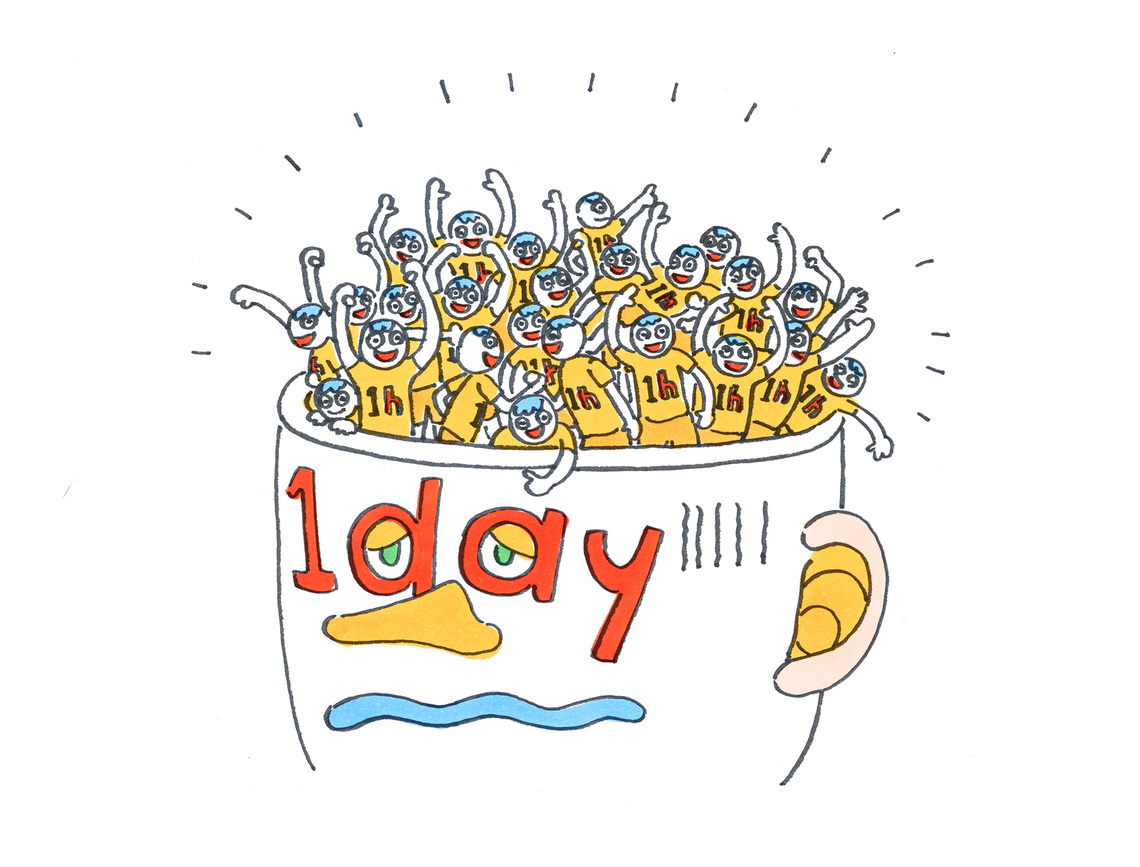The rice we eat without a second thought. Even something we'd normally overlook can spark new perspectives and ideas when we ask questions like this.
This question came from a segment in the TV program "Design's Umeboshi" (NHK E-TV, February-March 2015, 6-part series). The show, led by graphic designer Taku Sato, explored how applying design thinking to ordinary daily life can make it feel fresh and rich, offering hints for creative ideas applicable to work.
It showed how imagining or counting the grains of rice in a single bowl could lead to exploring agriculture, nature, the human body... and branch out into all sorts of topics.
Another topic the program explored was considering the number or quantity of things you can buy for 100 yen. What does 100 yen really mean? By thinking about it in terms of everyday items (like how many tissues? How many square meters of land in the city center?), and changing the units, you start to visualize how these things impact our lives.
Units frequently appear in our daily lives. Simply substituting them in different ways can spark new perspectives and transform your mindset into one that's rich in creative thinking.
■Expand your imagination and bring images and actions to life
"I'm not 46. Call me a 31-year-old high school senior."
This was the catchphrase used on the poster for the "Masters Koshien" tournament.
Every year, this tournament takes place where former high school baseball players, now middle-aged men, compete in regional qualifiers to realize their unfulfilled dreams and make it to Koshien Stadium. A junior from my high school baseball days approached me, asking, "I want you to come up with a way to get more people to know about this tournament," and I got involved in the planning.
We formed an in-house team and not only worked on creating the tournament logo, merchandise, pamphlets, and posters, but also had the good fortune to meet author Kiyoshi Shigematsu, who has written books about high school baseball, and welcome him as the tournament's cheerleader.
From thousands of photos taken at past tournaments, we selected one image for the poster: a 46-year-old man with a big belly, swinging powerfully and looking up at the sky. We felt this photo symbolized the tournament and would resonate with former high school players. The team collectively decided on the catchphrase, replacing age with grade level, believing it would rekindle the passion and dreams they held as high school players.
At the tournament, we saw middle-aged men—truly worthy of being called "high school seniors"—gladly gazing at that poster, and we felt a real sense of accomplishment.
The way numerical values representing quantity or proportion are framed—how you choose your units—can drastically alter the meaning, impression, and even the impact and message of those words. My first concrete awareness of this came from an experience like this.
The day before our presentation, our plan wasn't progressing, and we were stuck, panicking and unable to move forward. A senior member of our team gave us a stern but encouraging reminder:
"You're thinking you only have one day left, and that's why you're stuck. You still have 24 hours!"
At that moment, my motivation shot up: "Right! There's still plenty of time!" This experience sparked a habit of "replacing units" in various situations.
For example, when handed survey results for a product, I reframe it like this:
Product "awareness rate of 33%" ≒ "1 in 3 people know it" ≒ "Someone sitting at the desk in front of you and one on either side probably knows it," or "Out of roughly 30 customers in this cafe, about 10 know it."
I convert it into an easier-to-visualize "unit." The raw number 33 tells me whether it's up or down from before, or whether it's higher or lower than the target or competing products, but it doesn't give me a concrete picture of the situation in the wider world or in my own surroundings.
By replacing it, you can expand your imagination: "If I brought up that product at my desk, no one would know about it, so I wouldn't be ignored, but it wouldn't spark a lively conversation either." "Looking around this cafe, that person and this person probably know about it. But I don't see any tables talking about this product yet."
Furthermore, it leads to the next action or thought: "That person sitting over there seems talkative. How can I get someone like them to know about it?"
■Transforming seemingly impersonal numbers into something emotional
Training yourself to manipulate units doesn't require any special effort; you can do it in your daily life. When you're working, you inevitably come into contact with some kind of numerical data.
At those moments, consciously try replacing the units. Just doing this allows you to grasp things more simply, leading to next actions or boosting motivation—you can repeatedly experience this feeling.
Try using this approach in everyday conversations too.
Once, while watching a baseball game with my young daughter, she asked, "What's a .300 hitter?" I replied:
"It's a player who gets a hit at least once per game, making the fans cheer 'Yay!' and making dads happy." Hearing this, my daughter happily started mimicking a cheerleader, saying, "Then I have to cheer for them!"
Numbers are inseparable from both work and private life. They may seem impersonal and far removed from anything emotional, but simply changing the units can drastically alter how they're perceived.
Incidentally, the Masters Koshien tournament mentioned at the beginning continues to gain momentum year after year. Even now, you can still see players sheepishly saying things like, "Man, I'm in my [Xth] year of high school now," applying the tournament to their own grade level.




